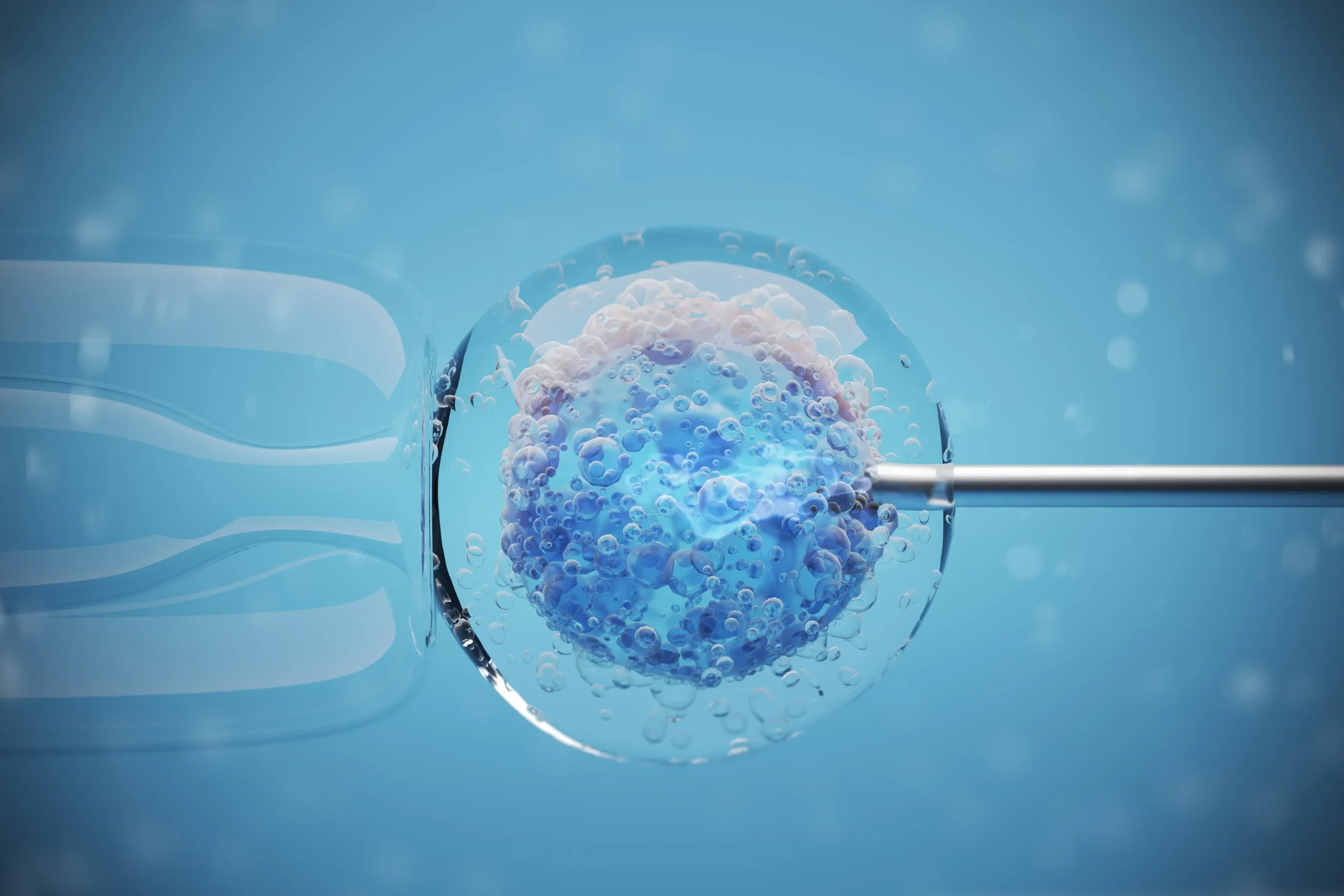
Assisted reproduction
In Vitro Fertilisation (IVF)
In vitro fertilisation (IVF) has significant benefits for couples who have fertility problems and want to have a child. It is a complex assisted reproduction technique which requires various phases and the use of technology. However, it has a very high success rate and the risk of complications is very low.
What is IVF?
In vitro fertilisation (IVF) is an assisted reproduction technique which requires experience and technology, as offered by Ginefiv, a pioneering clinic in the treatment of sterility and infertility in Spain, one which has helped thousands of women to achieve pregnancy in the 35 years since it was founded.
Thanks to IVF, a woman’s oocytes can be fertilised in the lab with the spermatozoa of their partner or a donor, and the embryos obtained from this fertilisation can be transferred to the patient’s uterus.
In addition to being an advanced and reliable assisted reproduction technique, one of the main advantages of IVF is that it allows the collected eggs, spermatozoa and embryos to be observed under a microscope. This in turn makes it possible to find out more information about the infertility of the couple and to detect any morphological anomalies. This information is extremely useful in generating a more reliable prognosis of the couple’s chances of becoming pregnant.
At the same time, the fact that any embryos which are surplus to the treatment can be frozen means that you can increase the probability of becoming pregnant in subsequent attempts, in which you only need to repeat the last phases of the cycle.
As an assisted reproduction technique, IVF is also compatible with the use of more recent technologies such as IMSI, MACS and the Embryoscope.

What does IVF consist of?
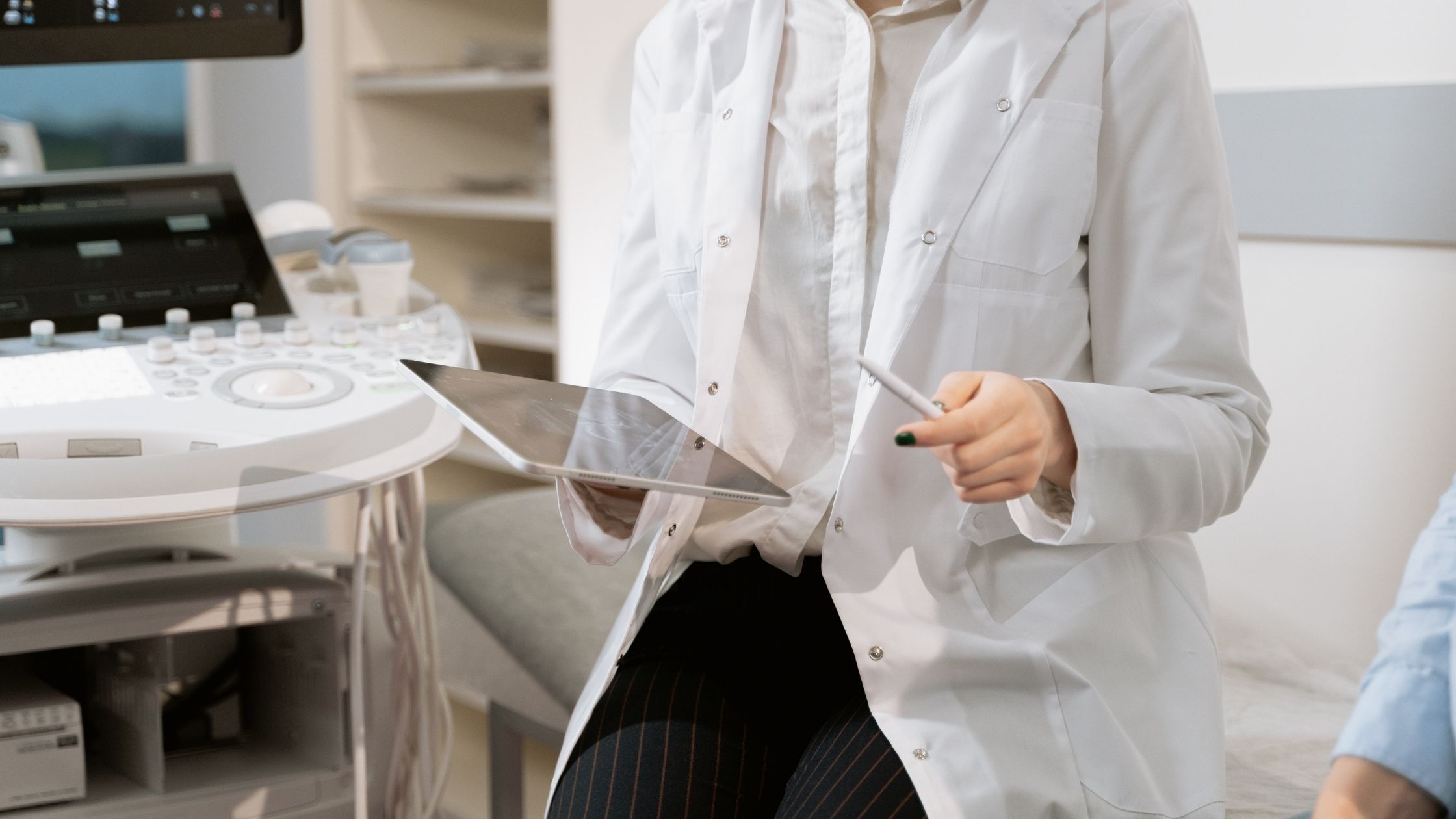
In vitro fertilisation consists of seven phases:
- Medical assessment: a complete fertility study.
- Ovarian stimulation: using hormonal medication.
- Egg retrieval: the ultrasound-guided extraction of oocytes.
- Fertilisation and embryo culture: the most recent advances and the strictest safety.
- Embryo transfer: embryo transfer protected by IVF Patrol.
- Embryo freezing: the freezing of surplus embryos.
- Confirmation of pregnancy: via a free Beta-hGC test.
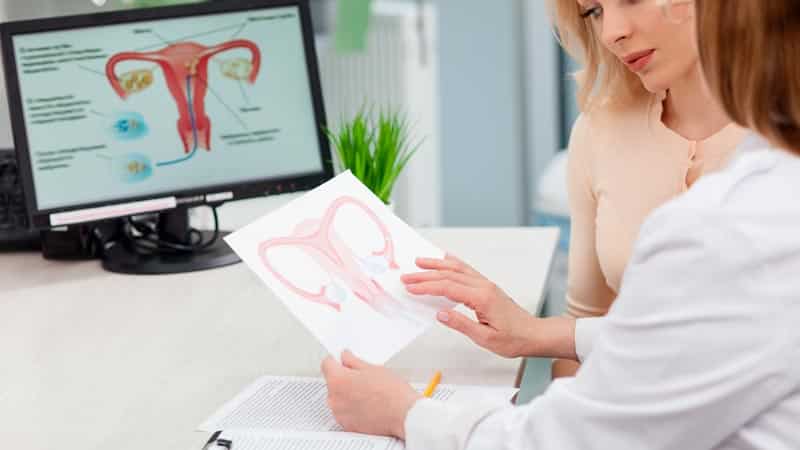
phase 1
Medical assessment
In the first phase, our medical team will analyse your case. In this consultation we will perform an ultrasound to check your ovarian reserve and detect any possible pathology. We will also run a complete fertility study before starting your treatment.
phase 2
Ovarian stimulation
In this phase, the ovaries are stimulated using hormones which are similar to those that regulate the menstrual cycle, in order to induce multiple ovulation. Ovarian stimulation is of vital importance in this type of treatment, in which the experience of a team such as the one at Ginefiv plays a fundamental role. We then closely monitor your stimulation using ultrasounds and blood tests. Once the follicles have reached the appropriate number and size, we use hormones to induce ovulation and 36 hours after that we perform the egg retrieval.

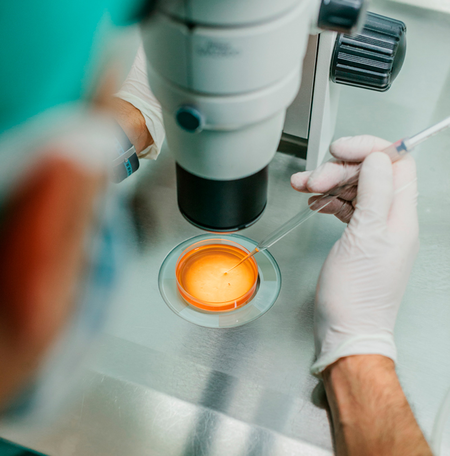
Phase 3
Egg retrieval
Egg retrieval is a simple outpatient procedure which takes about 15 minutes, during which an ultrasound is used a guide for the vaginal extraction of the oocytes. The retrieval is performed in our surgeries which are equipped with the latest technological advances so as to guarantee the patient’s safety and the success of the process. It is performed under light sedation so that you do not suffer any discomfort
Phase 4
IVF and embryo culture
Once the oocytes have been obtained, they are fertilised in our lab with the absolute guarantee afforded by our technical and human resources. Fertilisation can be carried out via conventional IVF or ICSI. Throughout the process, our electronic IVF Patrol system allows us to guarantee a secure monitoring and identification of all our patients’ samples.
IVF PATROL
This system guarantees a constant control of the samples, thereby avoiding any incidents in the identification of gametes and embryos. IVF Patrol uses a radiofrequency system to provide traceability throughout the treatment, allowing us to offer an extraordinary guarantee of safety.
This part of IVF has three steps:
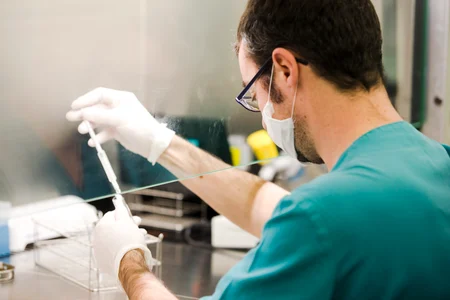
Spermatozoa selection
When selecting the spermatozoa, our biologists can make use of a technique which was introduced at Ginefiv in 2009: IMSI. Thanks to this technique, we can examine the spermatozoa in extreme detail using a microscope which is five times more powerful than standard microscopes.
We can also use MACS, which allows us to use immunomagnetic selection to obtain the optimal spermatozoa for egg fertilisation.
If you need it, Ginefiv has one of the largest sperm banks in the Madrid region, allowing us to select for each patient the most suitable donor based on criteria such as phenotype and facial similarity (our Right Donor for the Right Patient system). It also enables the establishment of genetic compatibility, minimising the risk of the transmission of hereditary disease
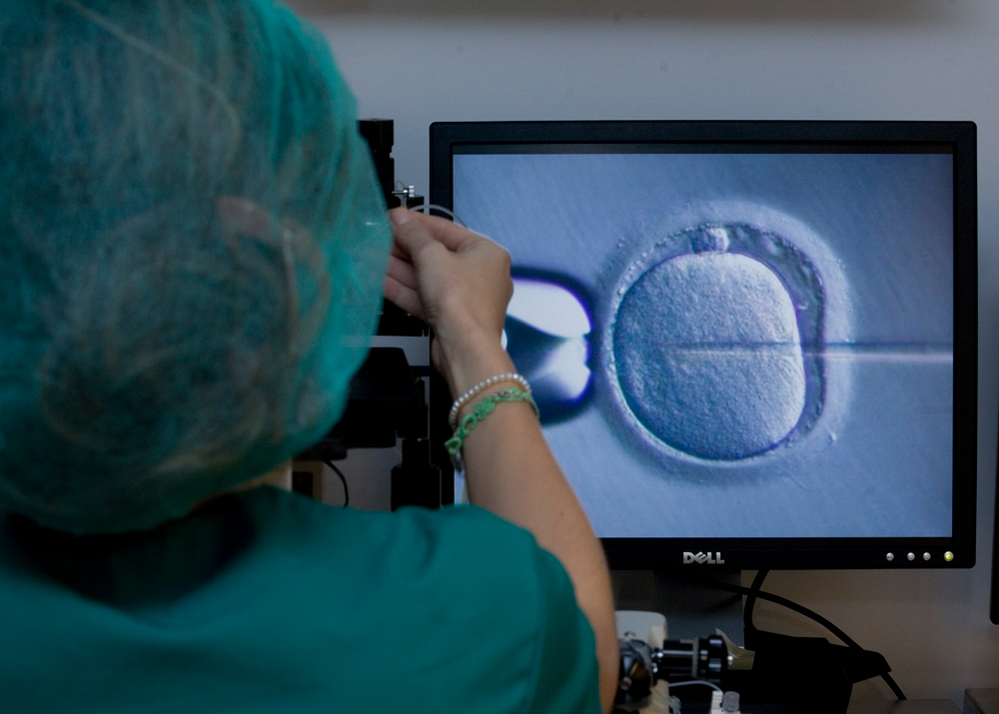
Egg fertilisation
Fertilisation can be carried out via conventional IVF or sperm microinjection (ICSI). In conventional IVF, the biologist adds approximately 25,000 previously selected and prepared spermatozoa to the culture medium containing the oocytes and lets the fertilisation occur naturally.
In ICSI or sperm microinjection, the biologist is the one who selects and inserts the single best spermatozoon into the cytoplasm of each oocyte
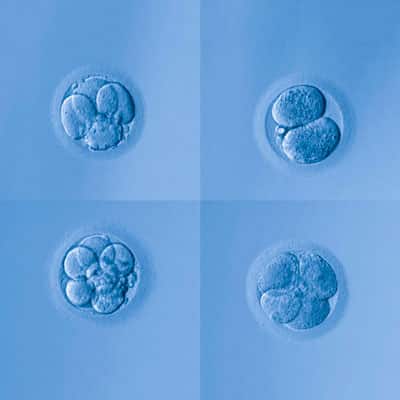
Embryo culture
To develop the embryo, Ginefiv uses innovative and advanced incubation techniques, monitoring embryo development in real time (in morphokinetic or time- lapse incubators) with systems such as the Embryoscope.
Ginefiv labs are designed to guarantee the environmental conditions which maximise the probability of fertilisation, controlling aspects such as temperature, sterility, pressure, etc
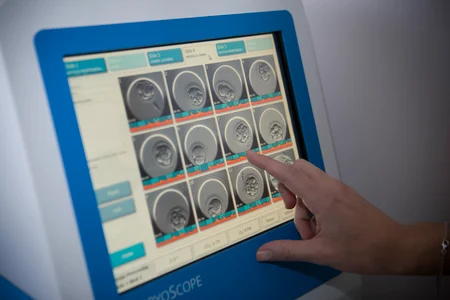
Phase 5
Embryo transfer
The embryos obtained in the lab are transferred into the patient’s uterus (generally between the 3rd and 5th day after the retrieval process) and the surplus embryos, if any, are frozen, using an ultrafast freezing technique called vitrification, and stored in latest generation banks that are designed to avoid cross-contamination.
Transfer is a rapid, painless process which does not require anaesthesia and which is performed using ultrasound as the guide for a very narrow tube which is inserted vaginally to the base of the uterus to deposit the embryos
Phase 6
Cryopreservation of surplus embryos
This is the last phase of IVF. Surplus embryos which are left over after the transfer are preserved in nitrogen at -196°C, using a technique called vitrification, and they can be used in subsequent cycles without the need to go through the more complex phases of the process
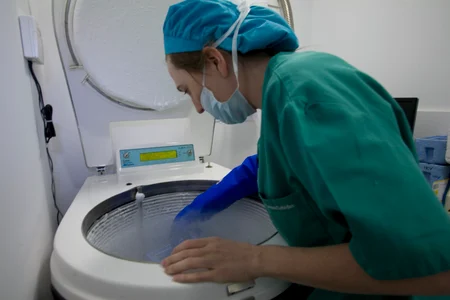
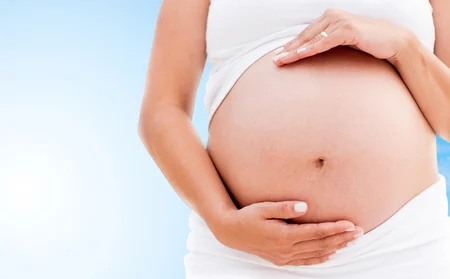
Phase 7
Confirmation of pregnancy
After approximately 15 days from the moment of embryo transfer, we will book you another appointment at the clinic to carry out a free Beta hCG test (a blood test) which will allow us to confirm your pregnancy
What is the success rate of IVF?
IVF is a treatment which provides excellent results, enabling us to achieve pregnancy rates per cycle of 40-70% and up to 95% after 3 cumulative cycles. The rate depends on age, and our medical team will inform you of your possibilities after having assessed your case.
One of the options you can use to increase your chances of success is the IVF + Genetics combined technique.

Frequently asked questions
The price of IVF at Ginefiv includes:
- Ultrasound and hormonal checks during stimulation
- Egg retrieval with sedation
- Fertilisation (ICSI) and embryo culture up to D3
- Embryo transfer
- Pregnancy test (b-hCG blood test)
- Pregnancy check
To obtain a personalised quote for IVF, please check here.
Ginefiv is open to the public every day of the year: from 8:00 to 21:30 on work daysand from 9:00 to 13:00 on weekends and national holidays. This is importantbecause the phases of the assisted reproduction cycle follow their own rhythm andrequire care and checks at the clinic on certain days, independently of whether it is aholiday or weekend. That’s why at Ginefiv we can take care of you every single dayof the year.
Furthermore, these extensive opening times mean that it is easy to attend you at the time of day which is most convenient to you.
Whenever possible, you will be seen by the same specialist. The most important aspect is that you are seen on the optimum day of your treatment, which will not always coincide with the availability of your gynaecologist. Therefore, it is possible that on occasion you may be attended by another of the centre’s specialists, who will be fully up-to-date with your case. Also, the progress of your case will be constantly monitored and supervised in clinical sessions by the entire Ginefiv medical team.
Invented 19 years ago, assisted hatching or assisted eclosion is a supplementary technique to IVF processes and in certain cases it can help with the implantation of the embryo in the uterus and therefore the pregnancy. In assisted hatching, a small orifice is opened in the zona pellucida which surrounds the embryo in order to help it break out and then become implanted in the woman’s uterus.
Laser-assisted hatching is the method we use at Ginefiv. The advantage of this process is its exactness and safety, seeing as it enables the energy to be focused simply and more precisely on the target area.
It is used in cases of frozen embryo transfer, seeing as the freezing process is thought to potentially harden the zona pellucida, and it enables the extraction of possible cell fragments and lysed cells.

